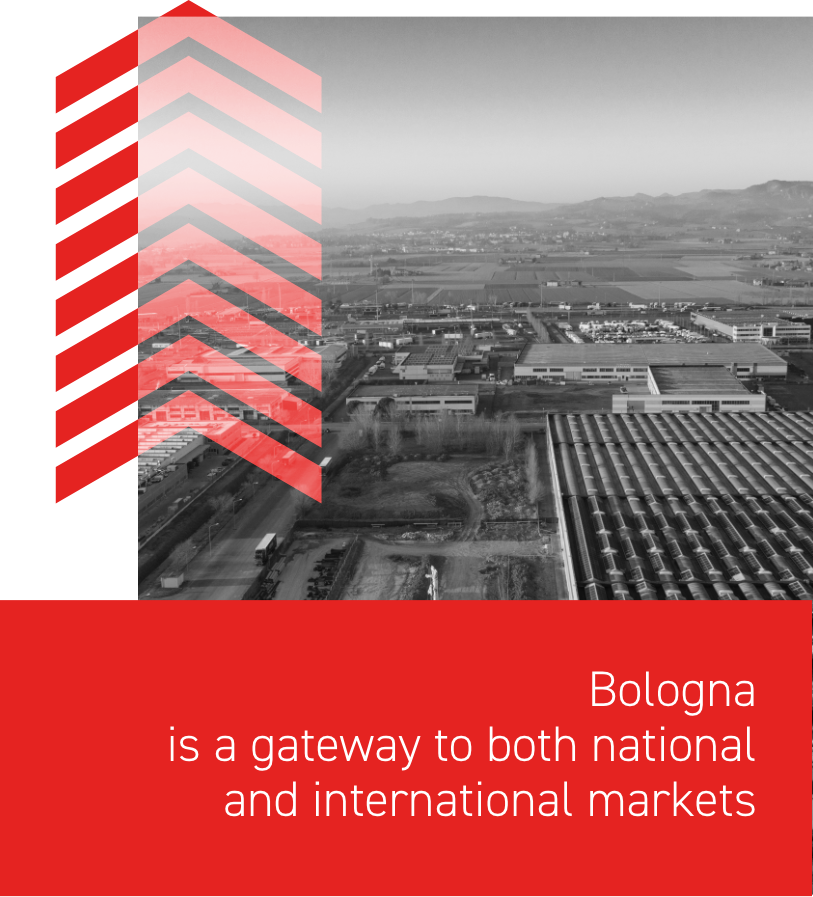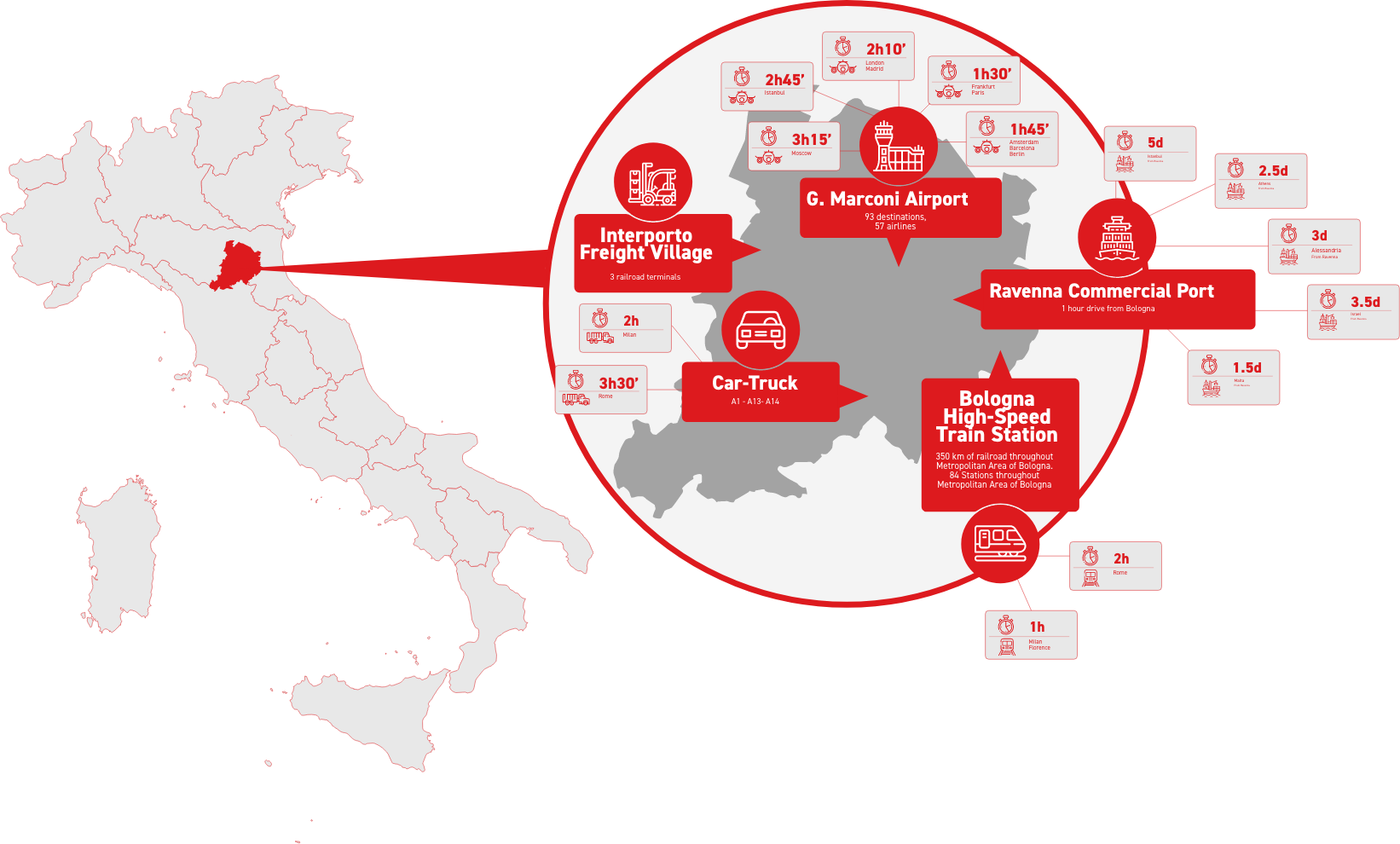Make it here, take it anywhere
Thanks to its central location and advanced infrastructure network, Bologna is one of Italy’s leading logistics and trade fair hubs. The metropolitan area is served by high-speed rail connections, an international airport, a modern freight village system, and integrated logistics platforms, ensuring smooth access to both national and international markets.
The region stands out for its strong export orientation and a productive ecosystem supported by advanced services. Ongoing investments in mobility and infrastructure continue to strengthen Bologna’s role as a competitive hub and strategic point of reference for globally oriented businesses.
- Railway
-
Bologna is a key junction in Italy’s railway system, with an extensive network of high-speed trains that strategically connect the city with the country’s major regions. Milan can be reached in one hour, Rome in two, and the entire national territory can be crossed from north to south in just a few hours, often with direct trains. The metropolitan area is served by over 350 km of railways and 84 stations, ensuring widespread and efficient local mobility.
- Airport
-
The Guglielmo Marconi International Airport is a crucial hub for connections across central-northern Italy and to global markets. With over one million passengers in April 2025 (exactly 1,024,626), traffic has increased by 4.5% compared to the same month in 2024. Serving more than 90 destinations through 57 airlines, the airport is well integrated into the regional production system and is just 15 minutes from the city center.
- Commercial Port
-
Located about an hour from the metropolitan area, the Port of Ravenna is a key regional gateway for trade with the Eastern Mediterranean and a strategic hub for exports to the Middle and Far East. The port plays a vital role in the logistics system of Emilia-Romagna.
- Roads
-
The Bologna metropolitan area is crossed by three of Italy’s main motorway routes, offering direct connections to major national and European markets. The Bologna's Interoporto, one of the most advanced in the country, combines logistics and sustainability, providing a strategic infrastructure for intermodal freight transport.

